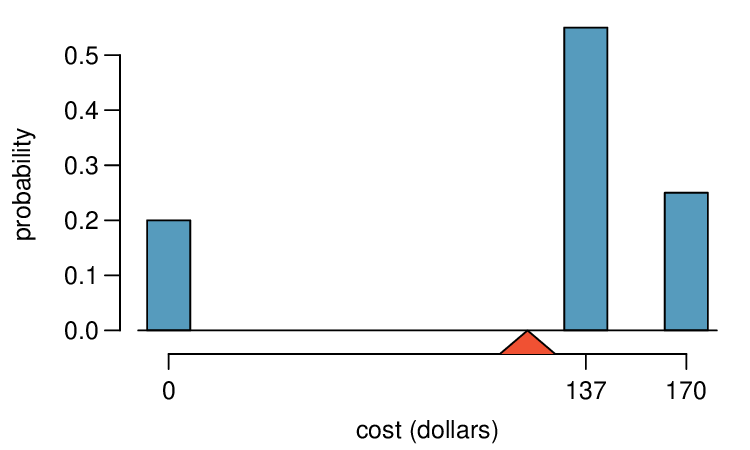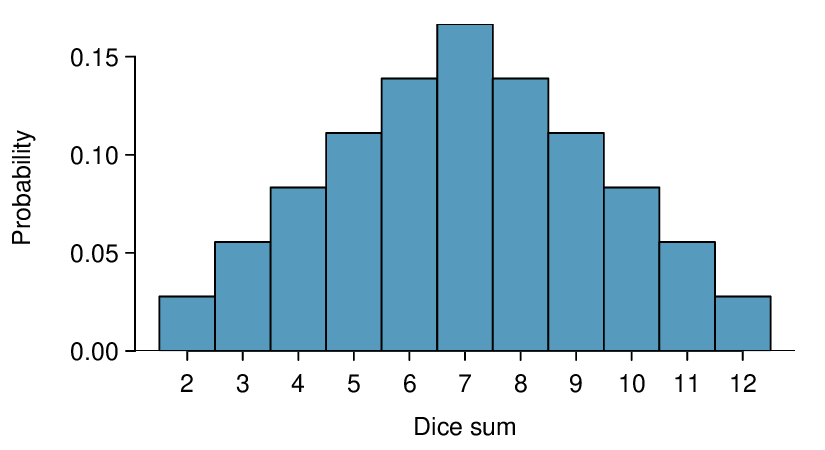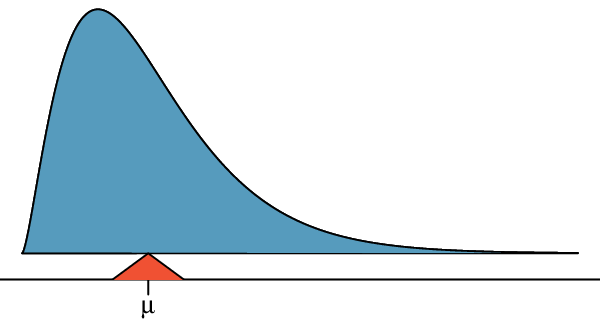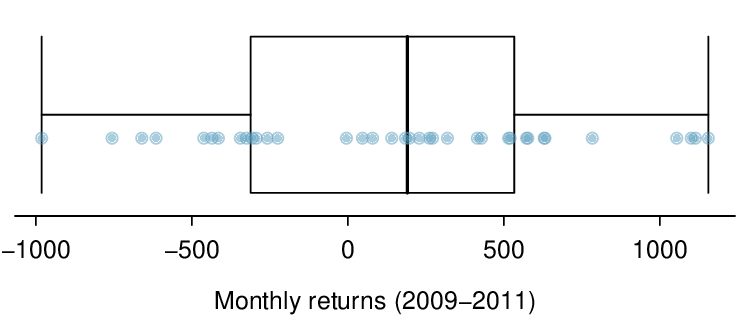Because each friend’s time is approximately normally distributed,
the sum of their times is also approximately normally distributed. We will do a normal approximation, but first we need to find the mean and standard deviation of the
sum. We learned how to do this in
Section 3.4.
Let the three friends be labeled \(X\text{,}\) \(Y\text{,}\) \(Z\text{.}\) We want \(P(X + Y + Z \lt 17.1)\text{.}\) The mean and standard deviation of the sum of \(X\text{,}\) \(Y\text{,}\) and \(Z\) is given by:
\begin{align*}
\mu_{sum} \amp = E(X+Y+Z) \amp \sigma_{sum}\amp = \sqrt{(SD_X)^2+(SD_Y)^2 + (SD_Z)^2}\\
\amp = E(X) + E(Y) + E(Z) \amp \amp = \sqrt{(0.11)^2+(0.13)^2+(0.12)^2}\\
\amp =4.6+4.8+4.5 \amp \amp = 0.208\\
\amp =17.5
\end{align*}
Now we can find the Z-score.
\begin{align*}
Z \amp = \frac{x_{sum}-\mu_{sum}}{\sigma_{sum}}\\
\amp =\frac{17.1-17.5}{0.208}\\
\amp =-1.92
\end{align*}
Finally, we want the probability that the sum is less than 17.5, so we shade the area to the left of \(Z = -1.92\text{.}\) Using the normal table or a calculator, we get
\begin{gather*}
P(Z \lt -1.92) = 0.027
\end{gather*}
There is a 2.7% chance that the friends will advance to the next level.






